![]()
Monday, June 8, 2015 | By Geoffrey Clarfield and Salim Mansur
In my opinion, this article is one of the clearest explanations of the Arab-Israeli conflict since years. Originally published by the National Post under the title “Clarfield & Mansur: There can be no peace in Jordan until the world appreciates the country’s true ethnography. A must read.
Arab nationalism is dead. It lasted for 100 years and it has suddenly disappeared. In the former states of now war-torn Libya, Syria and Iraq, speaking Arabic now means nothing. However, being a member of a family, lineage or clan of either the Shia, Sunnis, Christians, Druze, Yazidi, Tuareg or Bedouin means everything. The “Arab League” is now totally dysfunctional.
From Morocco to Malaysia, Islamic jihadis go from one place to another in support of recently created political entities like the Taliban, al-Qaida, or ISIL. Nations and their borders now count for nothing. Yet the new Pope has just recognized yet another Arab state, “Palestine.” Perhaps this is because he has critically misread how Arab entities really rise and fall.
Until the end of the First World War, most of the Arabic-speaking Middle East was under the authority of the Turkish Ottoman Empire. The Turks lost their empire when they fought against the allies during the war. And so, after four centuries of subservience to the Turks, Christian and Muslim speakers of Arabic, longing for independence, created Arab nationalism, a political movement that mirrored the ethnic and linguistic nationalisms that were then transforming the landscape of 19th-century Europe.
In this new ideology, an “Arab” was someone who spoke Arabic. The largely Christian Arab proponents of this ideology hoped that as citizens of newly created secular states, they would finally be given the legal and political equality denied to them for centuries under Islamic law and Muslim rulers. And so, after the First World War, a number of “Arab” states were created by the League of Nations, such as Lebanon, Syria and Iraq. By the end of the Second World War, they had all gained their independence.
Among these newly created states, there arose the Hashemite Kingdom of Jordan, which became formally independent in 1946. Until then, it was legally part of the League of Nations Mandate for Palestine, implemented on trust from the League of Nations by the British government. So we must ask, in this age of suddenly disintegrating “Arab states,” where do the Jordanians live and who are they?
The people who reside in Jordan live on the east side of the Jordan River. Anyone who has ever been to Sunday school probably knows the regions and cities of this area better than they know their own state or province. This is the biblical land of Bashan and of Gilead.
Three thousand years ago, what is now northern Jordan was the territory of the Israelites: specifically the tribes of Dan, Manasseh, Gad and Reuben. Later, the area became part of the second Jewish Commonwealth under the Maccabees, before the Romans conquered the whole area and made it part of their empire (the Christian Bible has retained numerous books which describe the history of the Maccabees until the Roman conquest).
Who are the Jordanians? Until the second decade of the 20th century there had never been a Jordanian people, ethnic group or tribe by that name, or a group of diasporic exiles who thought of themselves as “Jordanian.” Jordan is a 20th-century British invention, dreamed up in the 1920s, for the peoples living in what Britain illegally hived off from the League of Nations Mandate for Palestine in 1923. Until 1946 its British administrators called it just that — Eastern Palestine.
No one reads the League of Nations Mandate for Palestine document anymore. But according to international law, it is still valid….
Continue reading the full article in the National Post here.



 RSS
RSS

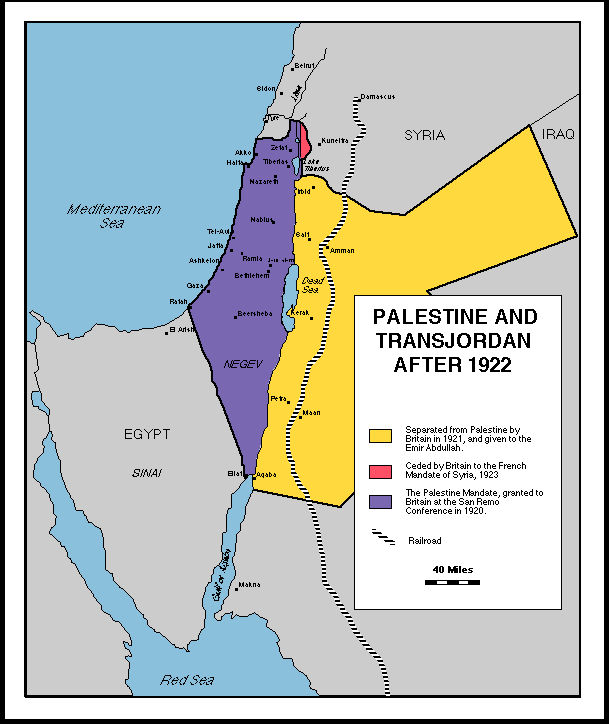
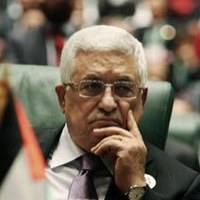
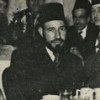
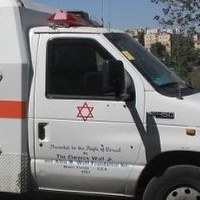
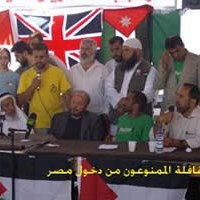





PALAESTINA, by Relandi.
There was nobody but Christians and Jews in Palestine 200 years ago!
The author Relandi[1], a real scholar, geographer, cartographer and well known philologist, spoke perfect Hebrew, Arabic and ancient Greek, as well as the European languages. The book was written in Latin. In 1695 he was sent on a sightseeing tour to Israel, at that time known as Palestina. In his travels he surveyed approximately 2500 places where people lived that were mentioned in the bible or Mishnah. His research method was interesting.
He first mapped the Land of Israel.
Secondly, Relandi identifies each of the places mentioned in the Mishnah or Talmud along with their original source. If the source was Jewish, he listed it together with the appropriate sentence in the Holy Scriptures. If the source was Roman or Greek he presented the connection in Greek or Latin.
Thirdly, he also arranged a population survey and census of each community.
His most prominent conclusions
1. Not one settlement in the Land of Israel has a name that is of Arabic origin. Most of the settlement names originate in the Hebrew, Greek, Latin or Roman languages. In fact, till today, except to Ramlah, not one Arabic settlement has an original Arabic name. Till today, most of the settlements names are of Hebrew or Greek origin, the names distorted to senseless Arabic names. There is no meaning in Arabic to names such as Acco (Acre), Haifa, Jaffa, Nablus, Gaza, or Jenin and towns named Ramallah, El Halil and El-Kuds (Jerusalem) lack historical roots or Arabic philology. In 1696, the year Relandi toured the land, Ramallah, for instance, was called Bet’allah (From the Hebrew name Beit El) and Hebron was called Hebron (Hevron) and the Arabs called Mearat HaMachpelah El Chalil, their name for the Forefather Abraham.
2. Most of the land was empty, desolate, and the inhabitants few in number and mostly concentrate in the towns Jerusalem, Acco, Tzfat, Jaffa, Tiberius and Gaza. Most of the inhabitants were Jews and the rest Christians. There were few Muslims, mostly nomad Bedouins. Nablus, known as Shchem, was exceptional, where approximately 120 people, members of the Muslim Natsha family and approximately 70 Shomronites, lived.
In the Galilee capital, Nazareth, lived approximately 700 Christians and in Jerusalem approximately 5000 people, mostly Jews and some Christians.
The interesting part was that Relandi mentioned the Muslims as nomad Bedouins who arrived in the area as construction and agriculture labor reinforcement, seasonal workers.
In Gaza for example, lived approximately 550 people, fifty percent Jews and the rest mostly Christians. The Jews grew and worked in their flourishing vineyards, olive tree orchards and wheat fields (remember Gush Katif?) and the Christians worked in commerce and transportation of produce and goods. Tiberius and Tzfat were mostly Jewish and except of mentioning fishermen fishing in Lake Kinneret — the Lake of Galilee — a traditional Tiberius occupation, there is no mention of their occupations. A town like Um el-Phahem was a village where ten families, approximately fifty people in total, all Christian, lived and there was also a small Maronite church in the village (The Shehadah family).
3. The book totally contradicts any post-modern theory claiming a “Palestinian heritage,” or Palestinian nation. The book strengthens the connection, relevance, pertinence, kinship of the Land of Israel to the Jews and the absolute lack of belonging to the Arabs, who robbed the Latin name Palestina and took it as their own.
In Granada, Spain, for example, one can see Arabic heritage and architecture. In large cities such as Granada and the land of Andalucía, mountains and rivers like Guadalajara, one can see genuine Arabic cultural heritage: literature, monumental creations, engineering, medicine, etc. Seven hundred years of Arabic reign left in Spain an Arabic heritage that one cannot ignore, hide or camouflage. But here, in Israel there is nothing like that! Nada, as the Spanish say! No names of towns, no culture, no art, no history, and no evidence of Arabic rule; only huge robbery, pillaging and looting; stealing the Jews’ holiest place, robbing the Jews of their Promised Land. Lately, under the auspices of all kind of post modern Israelis — also hijacking and robbing the jews of their history.